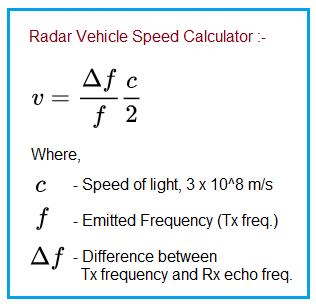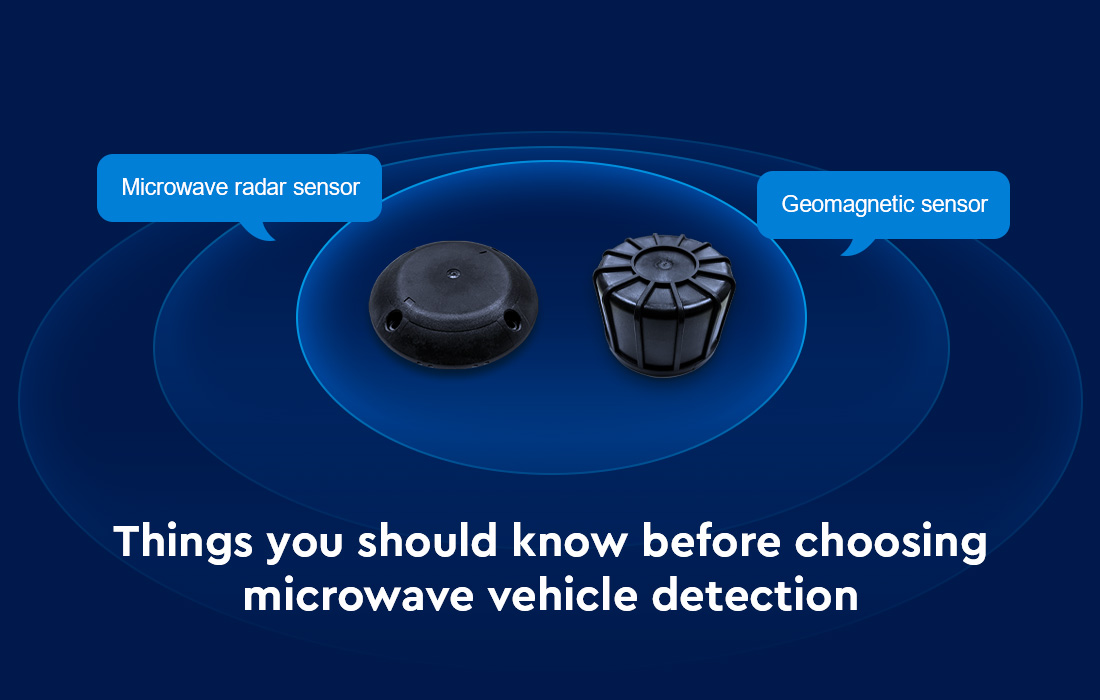Whether it’s in business, industry, or municipal management, traffic control and intelligent management of parking lots are a topic worthy of attention. Nowadays, several popular vehicle detection methods such as ultrasonic sensors, optical sensors, and magnetic vehicle detectors have certain limitations in detecting the presence of vehicles, which bring great obstacles to optimizing traffic flow. Therefore, it is very important to know and configure the proper parking detection system. We will focus on microwave vehicle detection to help you make a better decision on whether you should choose this solution for your vehicle detection. If you are looking for a manufacturer that uses microwave radar motion sensors for parking detection, make sure you read the full content of this article. MOKOSmart has been focused on manufacturing and R&D of IoT products for more than 16 years, and our LW009 also uses the geomagnetic sensor and microwave radar sensor. About the characteristics of our product, we will also give you a detailed introduction in this article.
What is a microwave vehicle detection system?
The microwave vehicle detection system uses high-frequency radio signals transmitted over a direct line. The detector records the frequency changes of the waves that occur when the microwave source and the vehicle are in relative motion. This enables the device to detect moving vehicles. Radar can detect distant objects and determine their position and speed. Research has shown that microwave radar sensors do provide actual, accurate data to ease traffic congestion and parking problems, but the technology is also vulnerable to weather, especially in inclement weather and environments.
History of radar detection
Radar is short for radio detection and ranging. In the late 19th century, Heinrich Hertz was the first person to show that radio waves could be reflected off metal objects. Christian Hulsmeyer was using it to detect ships and avoid collisions by the early 20th century.
Until World War II, radar was much improved and used to time pulses on oscilloscopes. It was also during this time that scientists discovered that radar could be used to determine the distance and angle of a target. Decades later, this technology has found further applications in other applications, including vehicle detection.
How does microwave vehicle detection work
There are two kinds of microwave radar sensors, they are CW Doppler radar and FMCW radar.
Doppler Effect
In 1842, Christian Doppler described a phenomenon in which the frequency or wavelength of waves (light, sound, etc.) increased or decreased. In the Doppler radar, the vehicle speed is proportional to the change in frequency between the received and transmitted waves. The phenomenon can be used to detect the presence of vehicles.
The reflected signal of the vehicle can be used to measure the channel, presence, volume, clearance, classification, speed, etc., and can provide collision avoidance warnings, dilemma area warnings, wrong heading warnings, and parking warnings. For a given antenna size, the higher the frequency, the greater the spatial resolution of the radar.
CW Doppler radar emits CFW. The constant transmission of frequency over time enables the reflector speed to be calculated. The reflected waveform frequency increases when the vehicle is near the radar and decreases when the vehicle is away from the radar antenna. The formula of Doppler radar is:

v = c × fD / 2 × fC × (cos ϑ)
Where
v = speed
c = speed of light
ϑ = angle between the direction of the vehicle and radar wave propagation
f C = carrier frequency
f D = Doppler frequency
A major inherent drawback of CW Doppler radar is its inability to detect whether there are parked vehicles existed.
FMCW Radar
In FMCW radar, the wavelength frequency changes with time. Our LW009 vehicle detector uses FMCW radar. This radar device can detect the presence of parked vehicles, as well as detect the presence of vehicles
The vehicle distance is directly proportional to the difference between the transmitter frequency during detection and the transmitter frequency during reception expressed as:
R = c × T × Δf / (2 × B)
Where
R = vehicle range
Δf = instantaneous difference in frequency between receipt and signal transmission
B = RF modulation Bandwidth
T = Modulation period or period of time
The FMCW radar calculates the travel speed of a vehicle by dividing the lanes of the traveled way into bins or zones of a known length. The formula for vehicle speed is:
v = d /ΔT
Where
v = vehicle speed
d = distance between leading edges of zones
ΔT = time between vehicle arrival at the leading edges of adjacent zones/bins
FMCW radars are versatile and also may use the Doppler effect to calculate the vehicle’s speed.
According to the above data comparison, we can know that FMCW radar is superior to CW radar in vehicle detection and data collection. It can accurately judge the presence, speed, arrival time, occupancy, vehicle classification, and queuing time of vehicles, and can detect accidents, identify parked vehicles, and provide distress area warnings and wrong-going warnings.
Why use microwave vehicle detection
Different from photoelectric or ultrasonic sensors, microwave radar sensors are less affected by temperature, rain, wind, fog, humidity, light, and other conditions. As a result, it can provide accurate data for parking detection outdoors, as well as detecting stationary and moving vehicles. Moreover, the installation and maintenance are easier than other sensing technologies. In addition, there is a lower risk of damage to the equipment because the radar traffic detector is not mounted on rails.
Challenges of microwave radar parking sensor
It can be challenging for radar sensors to detect smaller targets and vehicles with little space between them. And it can only detect vehicles traveling faster than a preset speed. Vehicles below that speed may be left waiting for a signal change to activate the next vehicle. Because the microwave motion sensors are usually mounted on top of the signal light, it is not easy to inspect from the ground. A separate lane is required to detect right-turning vehicles, but a mix of ring and microwave detectors can be used at an intersection. Microwave vehicle detectors can also be used as signal lights to control traffic on the narrow bridge leading to the entrance and exit of the parking lot.
Where can microwave vehicle detection be used?
Railways: Trains move fast, one after the other, and accurate detection of their presence can be reported backstage to warn how soon the train will arrive at the station, as well as to schedule how long it will be before the next train passes on the same track. Microwave vehicle detection can not only improve work efficiency but also avoid the disaster caused by human negligence.
Loading dock: The space for vehicles on the dock is limited, but one truck after another does come to unload. So in order for goods to move in and out of the truck efficiently, it is important to notify the operator as soon as the truck arrives.
Charging stations for electric vehicles: If the cars in charging stations are not placed in a standard way and cause congestion, it will inevitably make customers’ experience worse, which will lead to a decline in business. Therefore, in order to prevent cars from not parking in the charging stations according to the regulations, as well as timely detection of unauthorized vehicles parked at electric vehicle charging stations, many charging stations have deployed radar monitoring sensors.
Tollbooth: The microwave radar sensor will detect the presence of the vehicle and activate the stop bar as the vehicle approaches the toll booth. This improves traffic efficiency, optimizes processes, and reduces labor and traffic pressure.

Why should you choose LW009 from MOKOSMART?
MOKOSMART developed a vehicle detection system that integrates microwave radar and magnetic sensors to help relevant personnel find the right solution to meet their needs through dual-mode accurate detection. As below are some benefits of choosing our plan:
Dual-mode sensor greatly improves the detection accuracy: the common parking sensors in the market are usually single-magnetic detection or just radar detection, which greatly increases the probability of false detection when it is interfered with by an electromagnetic field or other restricted environments, and the detection accuracy can reach more than 99%.
Easy installation and maintenance: there are two models of our parking sensor to support different installation methods. LW009-IG can be embedded under the ground, and there is also a detachable sleeve structure design to support simple after-sales maintenance. The LW009-SM also comes with glue to avoid drilling. In addition, temperature and humidity sensors are also supported to detect whether the road is icy.
High reliability: the ultra-long transmission distance of LoRaWAN is 500m~1000m, and the low-power battery makes its service life up to 5 years.
How does our LW009 work
Our vehicle parking detection sensor adopts a parking status detection method combining magnetic field and microwave, which is characterized as follows: The equipment used in this method includes three-axis geomagnetic sensor and microwave radar sensor, including the following steps:
Step 1: Use the triaxial geomagnetic sensor to monitor the fluctuation value, peak-peak value, and mean value of the XYZ triaxial magnetic field data to judge the changes in parking status. If the sampled data is near the critical value, start the microwave radar sensor;
Step 2: Microwave data acquisition and preprocessing: microwave radar sensor is used to carry out equal interval triangle wave scanning, and two signals under each discrete frequency point are received. Hanning window formula is used to process the collected data, and discrete Fourier transform is used to further process the data, converting the time domain into the frequency domain for analysis;
Step 3: Microwave vehicle detection, including the following steps:
Step 3.1: The data obtained in step 2 are analyzed in the frequency domain and are modulated;
Step 3.2: Send the modulus data obtained in Step 3.1 to the SVM predictor to obtain the decision result of the SVM predictor on parking status;
Step 3.2: By sending the modulus data obtained in Step 3.1 into the neural network predictor, the judgment result of the neural network predictor on parking status can be obtained;
Step 4: Dynamic weight adjustment, including the following steps:
Step 4.1: Firstly, a judgment weight is preset according to the accuracy of the three-axis geomagnetic sensor, SVM predictor, and neural network predictor.
Step 4.2: If the three judgment results are consistent, the weight remains unchanged;
Step 4.3: If the three judgment results are inconsistent, the weight shall be recalculated according to their respective accuracy;
Step 5: The parking status after comprehensive judgment is obtained according to the latest weights based on the detection results of geomagnetic parking, the judgment results of the SVM predictor, and the judgment results of the neural network predictor.
Is our parking detection system suitable for your environment?
No matter what industry you are in and what kinds of smart vehicle detection systems you are looking for, MOKOSMART can speed up implementation and increase customization based on your facility and actual need.
If your facility only requires mobile vehicle inspection, our LW009 wireless vehicle detector gives you the inspection flexibility you need. In addition, if you are required to detect the presence of people and objects beyond just their movement, our PIR sensor can be used in conjunction with your application scenario. Contact our team and let us make you the ideal product for your project.
Continue Reading About Vehicle Detection
























